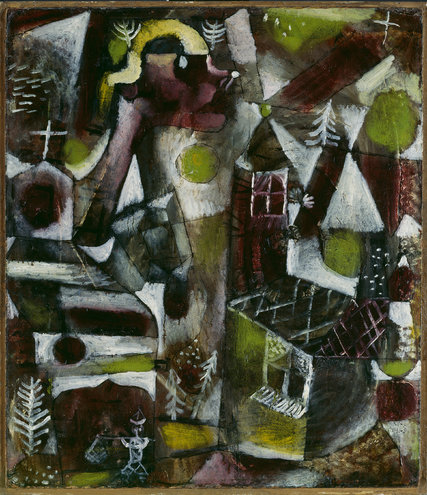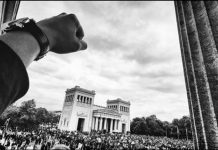BERLIN — After 26 years in court, the longest-running German legal wrangle over Nazi-looted art ended Wednesday with a settlement that will reimburse a family for the seizure of a masterpiece by Paul Klee that was once scorned as the work of a degenerate.
For decades, officials for the city of Munich, citing a variety of arguments, had resisted returning Klee’s “Swamp Legend,” a dreamlike abstract punctuated by childlike imaginings of windows, trees and crosses.
But after years of political pressure, the city agreed to a settlement under which the painting would remain in Munich’s Lenbachhaus museum but the heirs of the German art historian from whom it was taken would be paid a sum equal to its market value.
“It’s a scandal that it has taken so long, and a disgrace that we had no alternative to going to court,” said Gunnar Schnabel, a lawyer for the heirs, the grandchildren and great-grandchildren of Sophie Lissitzky-Küppers, the art historian.
Photo

Paul Klee’s “Swamp Legend,” from 1919. Credit Städtische Galerie im Lenbachhaus und Kunstbau München
“The Bavarian Ministry of Culture and state collections and institutions are committed to vigorous provenance research with the goal of rectifying injustices of the Nazi era,” Bavaria’s minister of art, Ludwig Spaenle, said last week after another settlement with Jewish heirs was reached.
Klee painted “Swamp Legend” in 1919, while living in Munich, and it is believed that Ms. Lissitzky-Küppers’s husband, Paul Küppers, acquired it there directly from the artist. In 1922, though, Mr. Küppers died of tuberculosis and his widow met and fell in love with the Russian Constructivist artist El Lissitzky, whom she followed to the Soviet Union in 1926 and married a year later. On emigrating, she left her art collection of 16 paintings and one sculpture on loan to a German museum, the Hanover Provinzialmuseum — among them works by Kandinsky, Piet Mondrian and Fernand Léger, as well as “Swamp Legend” and two other Klee pictures.
Then in 1998, Germany endorsed the internationally agreed Washington Principles, which commit publicly owned museums to seek “a just and fair solution” with the heirs of the original owners of Nazi-looted art. Munich argued that these principles were applicable only to art taken from Jews, not works seized as part of the “degenerate art” purge.
The exact sum is subject to a confidentiality agreement signed by the parties, but a book published in 2009, “Lost Lives, Lost Art,” by Melissa Müller and Monika Tatzkow, reported the painting had been insured by the museum in 1992 for four million euros.
The settlement requires that wherever the painting is displayed, it will be accompanied by a sign documenting its ownership history, including its looting by the Nazis.
Source: After 26 Years, Munich Settles Case Over a Klee Looted by Nazis – The New York Times
































